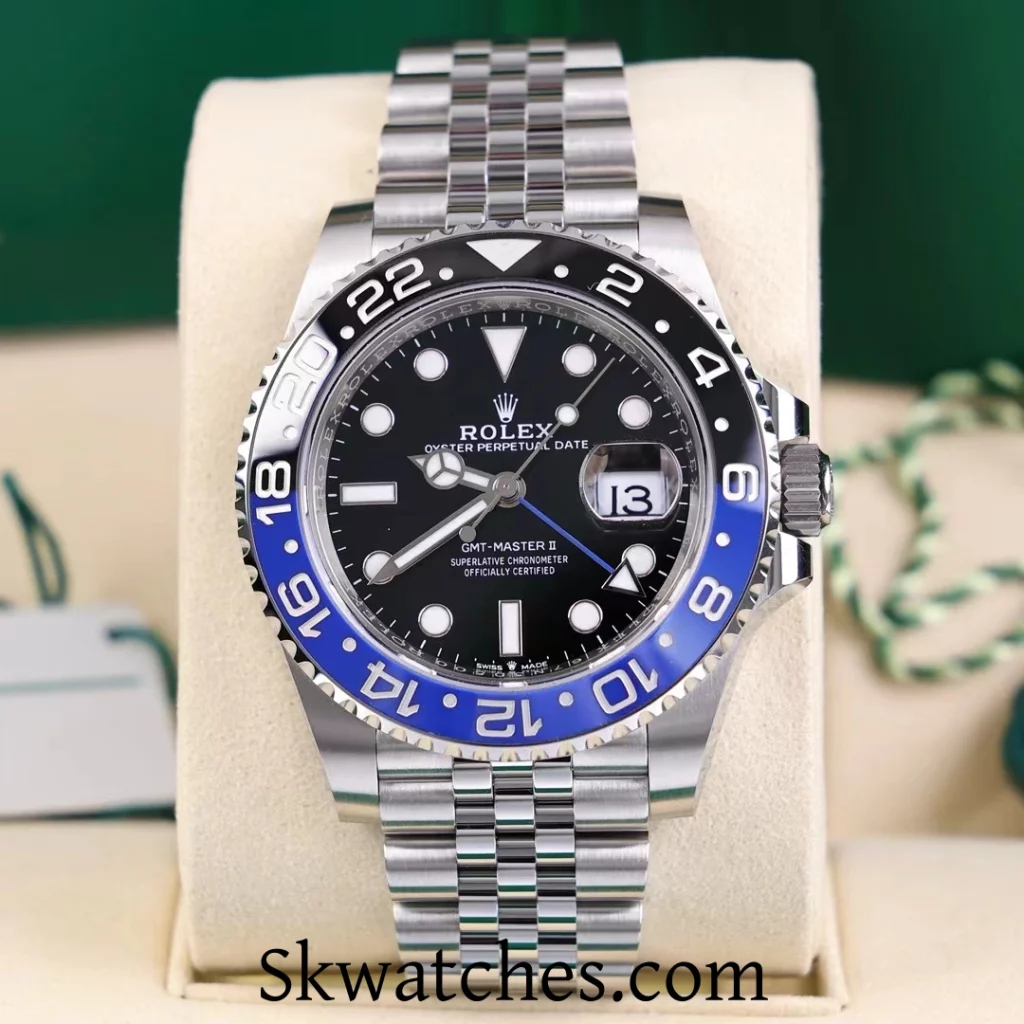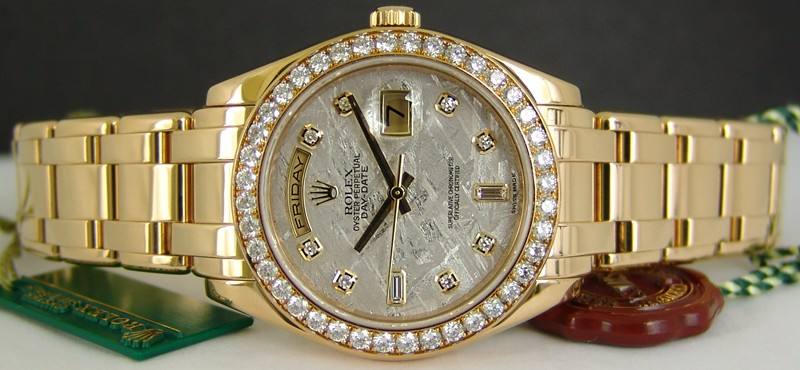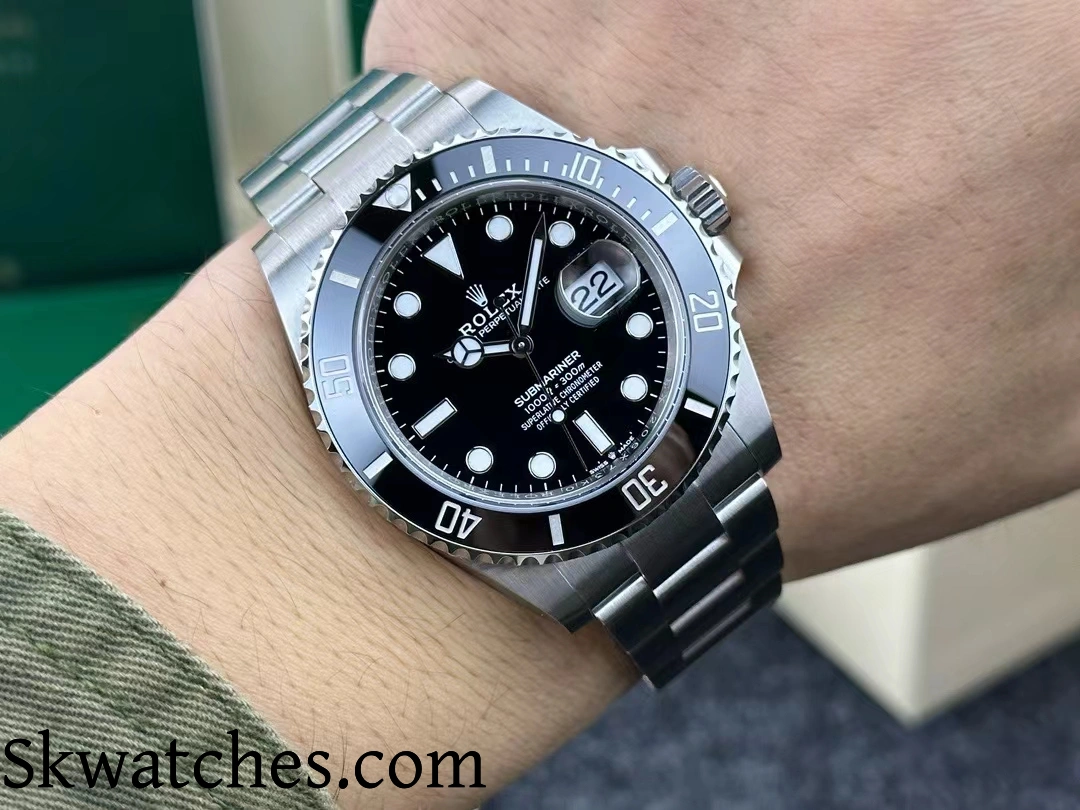Table of Contents
- 1. The Legendary Origins of the Blue and Black Cerachrom Bezel
- 2. Unveiling the Rolex Cerachrom Ceramic Craftsmanship
- 3. The Difficulties of Manufacturing the Two-Tone Cerachrom Bezel
- 4. The Unique Aesthetics of the 126710BLNR
- 5. Technological Breakthroughs in the Counterfeit Watch Market
- 6. How to Identify a High-Quality Replica
1. The Legendary Origins of the Blue and Black Two-Tone Ceramic Bezel In 2013
Rolex’s GMT-Master II 126710BLNR. This was the company’s inaugural two-tone ceramic bezel. Dubbed “Batman” among watch collectors, this watch’s blue and black two-tone ceramic bezel soon became a classic style of modern watchmaking. As an experienced replicawatches observer, I’ve seen how this watch has evolved in the replicawatches universe. High-end replicas at that time could only achieve the two-tone effect using the paint printing technique. It took until 2017 before top replica watch manufacturers finally perfected the two-tone ceramic firing process. Rolex’s decision, however, on the blue and black color choice wasn’t by chance. Blue is allocated for day (6:00 AM – 6:00 PM) and black for night (6:00 PM – 6:00 AM), precisely reflecting the original intent behind the GMT feature – assisting pilots in identifying day time zones and night time zones.
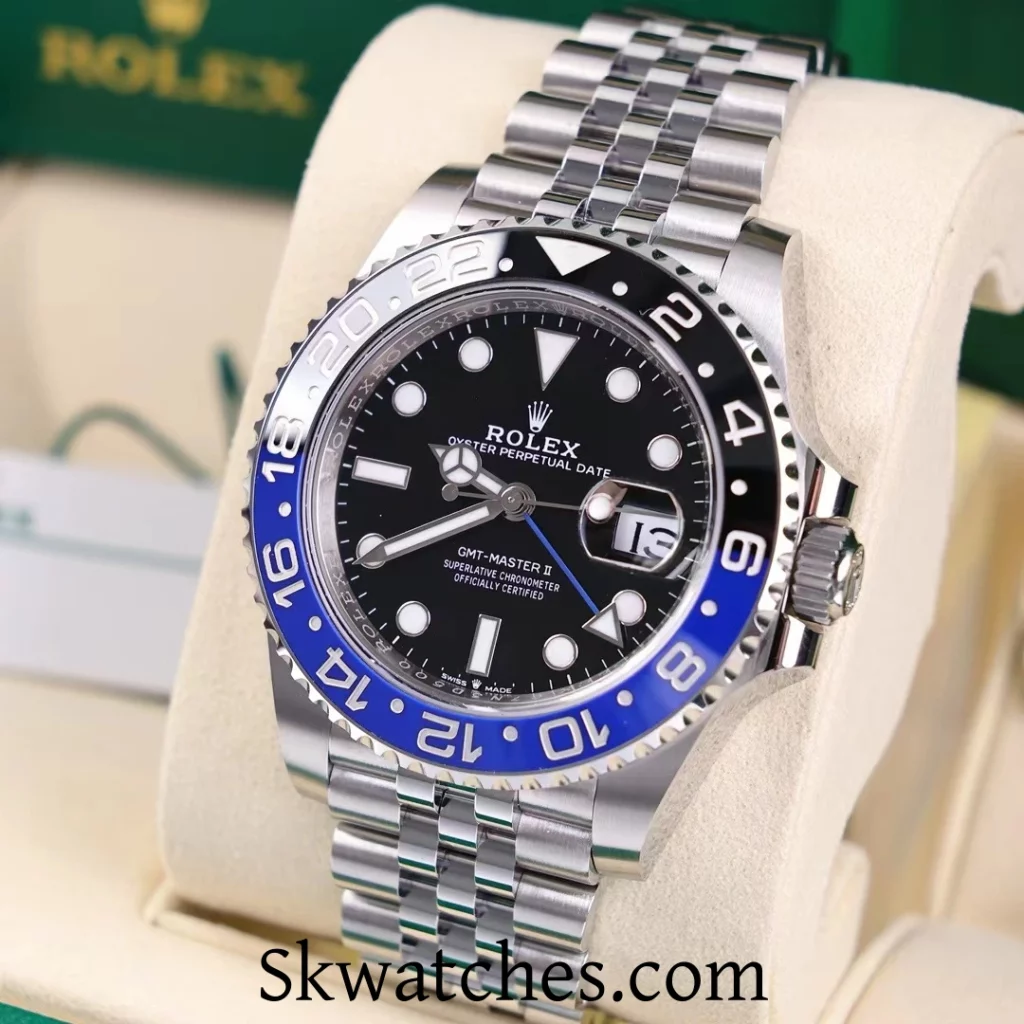
2. Revealing Secrets of Rolex’s Cerachrom Ceramic Process
2.1 A Masterwork of Materials Science
Rolex’s Cerachrom bezel, made of ceramic, is not standard ceramic but a secret composition of zirconium oxide (ZrO2) and aluminum oxide (Al2O3) material. Thanks to many decades of research and development, the material has a Mohs hardness rating of 9, one step lower than diamond, but more impact-resistant than conventional ceramic.
In the world of replica watches, replicating the properties of this material is fraught with challenges. Early replicas were either insufficiently hard and easily scratched, or too brittle and prone to breaking. It wasn’t until 2019 that some high-end replica watch factories improved the ceramic formula by adding rare earth elements.
2.2 The Secret of Color Stability
The most commendable feature of genuine Cerachrom is its colorfastness. This is due to the special pigments Rolex adds to the raw materials and the precisely controlled sintering process. A temperature deviation of even 5°C can result in color or density variations.
I once visited the firing workshop of a top-tier replica watch factory. They used a staged heating method:
- Phase 1: 20°C to 200°C (removal of organic impurities)
- Phase 2: 200°C to 800°C (initial crystallization)
- Phase 3: 800°C to 1500°C (complete densification)
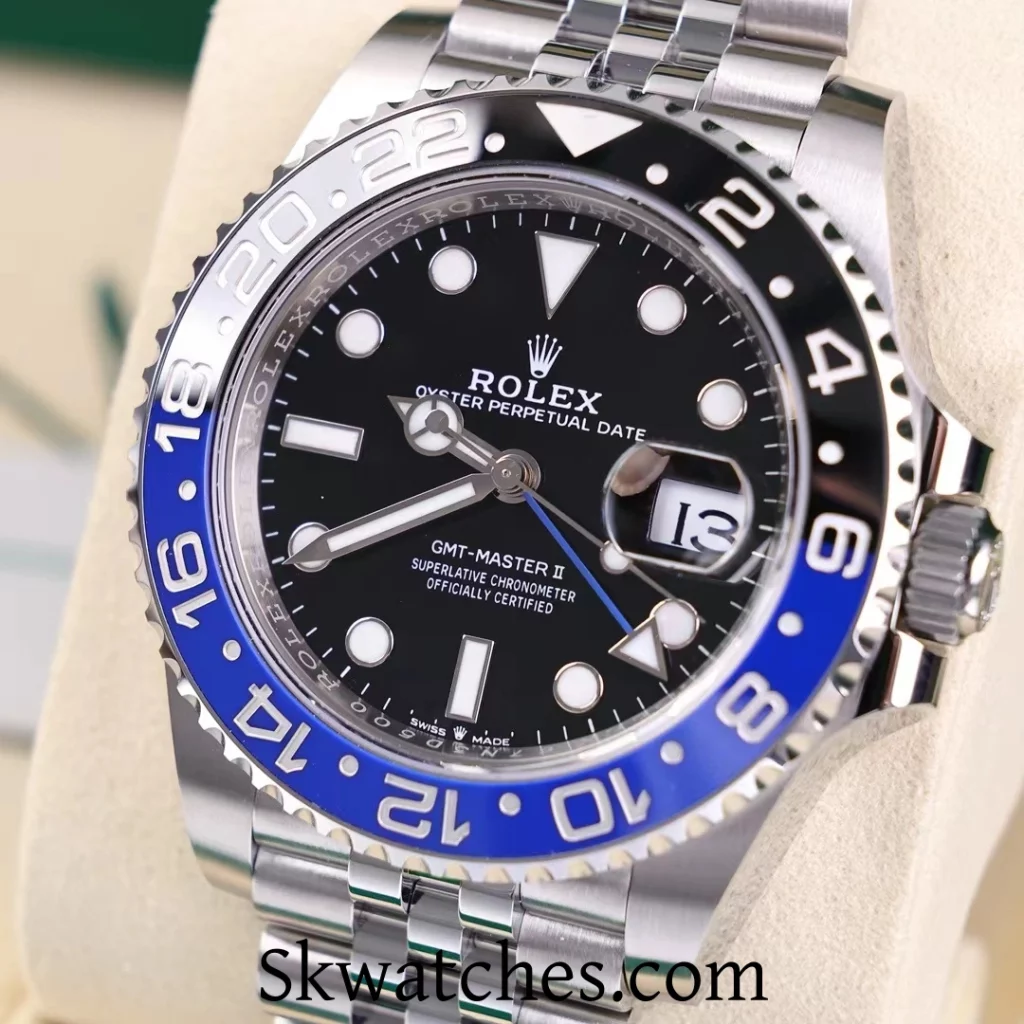
3. The Difficulties of Making Two-Tone Ceramic Bezels
Single-color ceramic bezels are already a technical challenge, and the blue and black two-tone bezel of the 126710BLNR raises the bar even further. Authentic watches utilize patented “double-injection molding” technology:
- First, a blue ceramic base is formed.
- Black ceramic slurry is then precisely filled into specific areas.
- A secondary sintering process combines the two colors at the molecular level.
In the replica watch industry, only a handful of factories can achieve seamless two-color ceramic splicing. Most replica products still use the following two alternatives:
| Process Type | Advantages | Disadvantages |
|---|---|---|
| Physical Splicing | Lower Cost | Seams Can Harness Dirt |
| Laser Coloring | Natural Transition | May Fade with Long-Term Use |
4. The Unique Aesthetics of the 126710BLNR
Unlike the traditional GMT’s red and blue “Pepsi” bezel, the blue and black 126710BLNR showcases a unique, modern aesthetic. Dubbed “Batman,” this color scheme exhibits subtle color shifts depending on the lighting:
- In bright light: The blue appears a vibrant cobalt hue
- In low light: The black portion almost blends into the dial
- At an angle: A refined matte finish is visible
In the high-end replica market, products that perfectly replicate these optical properties often command a high price. I compared five replicas at different price points, and only the highest-end version (priced around $800) managed to replicate 90% of the original’s visual quality.
5. Technological Breakthroughs in the Counterfeit Watch Market
5.1 Material Innovation
In recent years, some top replica watch manufacturers have achieved significant breakthroughs in ceramic materials:
- Using nano-zirconia powder to increase density
- Adding rare earth elements to improve toughness
- Developing proprietary pigment formulas
5.2 Process Improvements
Most impressive is the “gradient sintering” technology developed by one manufacturer:
- Using a special mold to fix two color zones
- Precisely controlling the sintering temperature curve
- Laser fine-tuning of color differences
Replica ceramic bezels produced using this process have color transitions that are almost as good as the original, though the price tag is 3-5 times that of regular replicas.
6. How to Identify a High-Quality Replica
As an expert with over a decade of experience, I’ve summarized several key points for identifying high-quality Rolex replicas:
- Color Transition: Authentic replicas have a transition area of approximately 2mm, while replicas are often wider or narrower.
- Engraving Texture
- Luminous Effect: Authentic replicas have a longer-lasting blue glow.
- Touch: A high-quality ceramic bezel should have a smooth, jade-like texture.
Important Note: Some replicas on the market use “two-color printing” to simulate the ceramic effect. Simply scratch with your fingernail to identify the bezel. Authentic replicas will never have the paint peeling off.

